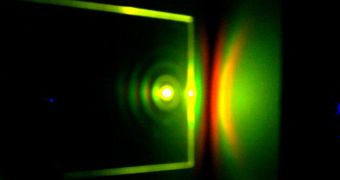Experts at the US Department of Energy's (DOE) Argonne National Laboratories (ANL) and Pennsylvania State University (Penn State) announced the development of improved luminescent solar concentrators (LSC), devices that could make solar energy economically feasible once and for all.
At this point, this form of green technology is not very appealing to many because solar cells cost a lot of money, while delivering a photon-electron conversion efficiency of just 18 to 20 percent.
But the US collaboration believes that the new LSC devices could help improve this conversion rate. What is worthy of mention here is that the team applied a purely optical approach to improve these instruments, which are common in sunlight-harvesting cells.
What LSC do is basically concentrate sunlight over a smaller area, reducing the amount of solar cells needed to produce the same amount of power. This means that people who chose to install such panels on their homes will receive the same amount of electricity using only a small number of panels.
The way concentrators work is very simple – they absorb light, and then re-emit it at lower frequencies. This process takes place within a single, transparent slab of material. The main advantage they have is that they can even collect diffuse light on a cloudy day.
Inside the slab, special structures guide photons to the edges of the instrument, where photovoltaic cells are set in place to convert them into electricity. The ANL/ASU team managed to create such a system in a manner that does not require it to use expensive Sun-tracking technologies, as was the case until now.
“Currently, solar concentrators use expensive tracking systems that need to follow the Sun. If they are a few tenths of a degree off from perfection, the power output of the system drops drastically,” expert Chris Giebink explains.
“If they could maintain high concentration without tracking the sun, they could create electricity more cheaply,” adds the scientist, who is an assistant professor of electrical engineering at Penn State. He was formerly based at the ANL.
“Experimentally we are working with devices the size of microscope slides, but we modeled the output for larger, more practical sizes. Extending out results with the model predicts intensification to 25 suns for a window pane sized collector. This is about two and a half times higher than a conventional LSC,” he concludes.

 14 DAY TRIAL //
14 DAY TRIAL //